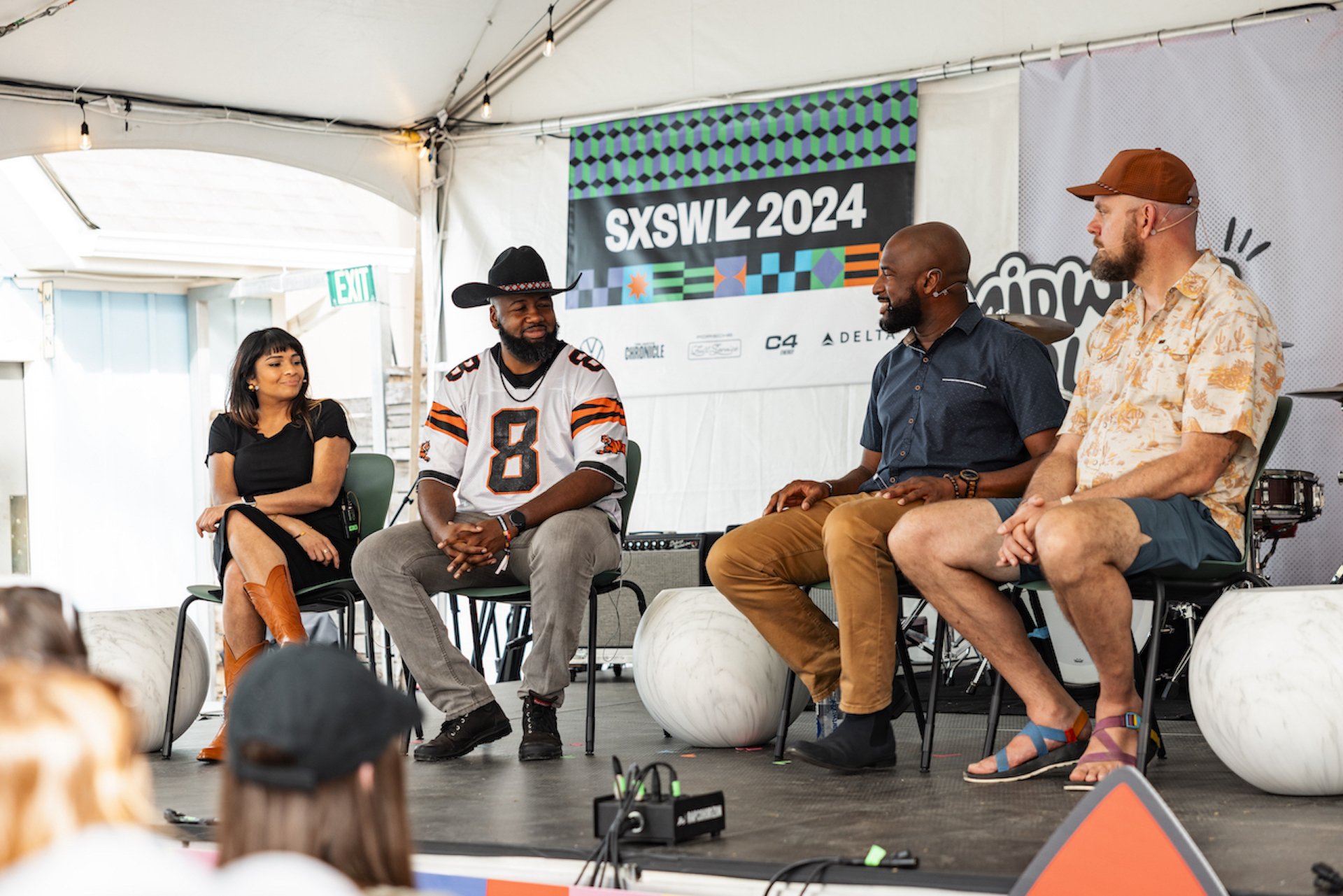Innovating for Inclusion
Together Outdoors Makes the Case for Creating a Welcoming Outdoors at SXSW
Innovation is a core theme at the legendary South by Southwest Festivals, and the innovative spirit of the outdoor recreation inclusion movement was on full display. At this year’s SXSW, Together Outdoors took part in an exciting panel discussion about the importance of creating a more welcoming outdoors — and how creative organizing and innovative business practices are helping make that possible in outdoor recreation.
“Building an Outdoors Where We All Can Thrive” was presented by ORR’s Senior Program Director and Together Outdoors Lead Ambreen Tariq, and featured Lesford Duncan of the Outdoor Foundation, Alex Bailey of Black Outside and Stacy Bare of Friends of Grand Rapids Parks.
The event was part of a full day of SXSW programming showcasing the outdoor recreation industry. It featured global brands, thought leaders, investors, innovators, and entrepreneurs.
“Outdoor Day at SXSW was a momentous opportunity for us to spotlight for the country how inherently innovative the spirit of our work is to grow our industry sustainably and bridge the gap between inclusivity and adventure,” said Ambreen.
The panelists agreed that, as America changes, it is vitally important that all Americans have access to the country’s outdoor spaces and feel welcome while recreating in those special places. If that doesn’t happen, both our public lands and outdoor recreation industries will face shrinking support.
The panelists reminded attendees that creating a welcoming outdoors requires overcoming centuries of legal exclusion and violence against under-represented communities seeking to recreate on public land. Adding to that problem is decades of flawed storytelling about who engages in outdoor adventure and who doesn’t.
“Early advocates of outdoor recreation preached a view subtly aimed at one certain group of people,” noted Duncan. “People who look like us have not been the image of sports like surfing and snowboarding.”
Bailey added that too often, stories of underrepresented people engaging in outdoor adventure aren’t shared in those communities.
Tariq urged empathy to help understand and then better welcome diverse communities, many of whom have generational trauma and fear related to outdoor spaces because of historical racism and exclusionary practices that occurred there.
“People sometimes seem ashamed of being afraid,” she observed. “It’s important to try to understand that fear and address it if we want them to feel safe outdoors.”
According to the panel members, gear can be another obstacle to engaging underrepresented communities in the outdoors. The first gear-related issue stems from years of messaging about what type of clothing one needs for outdoor explorations. The panelists agreed that people don’t have to buy technical apparel or shoes to have fun outdoors.
“Cotton isn’t going to kill you, and you probably don’t need any specialized shoes,” said Bare with a laugh.
Later in the session, Bailey added that his fondest hope for the future of outdoor inclusion is that all young people would see themselves as part of the outdoors, no matter who they are or how they dress while pursuing their recreational passion.
Access to outdoor equipment in disadvantaged communities is another gear-related obstacle to inclusion and access. Duncan noted that outdoor inclusion advocacy groups are addressing this issue with innovative ideas such as “gear libraries,” where people can borrow camping equipment and other outdoor items at no cost. Some groups stock their libraries, in part, with surplus inventory items contributed by outdoor industry companies.
In closing, the panel reminded the audience that while much work lies ahead, there have been many positive developments in boosting outdoor inclusion. Tariq noted that social media has given outdoor inclusion activists a powerful way to build community. Bailey praised Texas voters for overwhelmingly approving a $1 billion bond initiative to improve Texas state parks.
“State parks play an important role in creating easy access to the outdoors, especially for young people,” he said.
Watch the entire session here.


